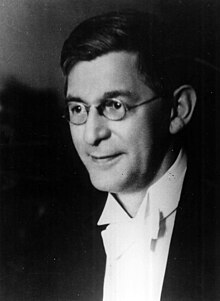Thomas Parnell (scientist)
| Thomas Parnell | |
|---|---|

Thomas Parnell of the University of Queensland, c.1920, Photo courtesy of the University of Queensland Archives, S177 p831
|
|
| Born |
5 July 1881 West Haddon, Northamptonshire, England |
| Died | 1 September 1948 (aged 67) Indooroopilly, Queensland, Australia |
| Nationality | British |
| Alma mater | St John's College, University of Cambridge |
| Awards | Ig Nobel Prize |
| Scientific career | |
| Fields | Physicist |
Thomas Parnell (5 July 1881 – 1 September 1948) was the first Professor of Physics at the University of Queensland. He started the famous pitch drop experiment there.
Thomas Parnell was born in West Haddon, Northamptonshire, England and died in Indooroopilly in Brisbane, Australia. He was educated at St. John's College, in Cambridge, after winning a scholarship and received his B.A. in 1903. He received his M.A. from Cambridge in 1908.
Parnell took up a tutoring position at Trinity College, at the University of Melbourne, between 1904 and 1911, with the hope that it would enable him to have time to pursue research, and then apply for a Fellowship position at the Cambridge. However his teaching duties in physics, mathematics and chemistry were so numerous, that he never had the time to dedicate to research. He elected to move to Brisbane with friend and future wife, Hermiene Ulrich, also a lecturer at the newly established University of Queensland. He lectured in physics at the University of Queensland between 1911 and 1918, and was a professor between 1919 and 1948.
He enlisted in World War I as a private in the Australian Imperial Force in 1917, after having been in the Volunteers in England. He served as a gunner, often under the orders of his former students. He refunded his excess pay during the War, back to the University, to assist ex-servicemen planning on undertaking study. His wife, Hermiene returned to lecturing work during World War I, to assist the University.
Parnell would begin his research into a high-precision method of measuring inductance in 1917. During 1922, he took part in an expedition to Goondiwindi to witness a total solar eclipse, and test Einstein's theory of relativity in this setting. In 1927 Parnell initiated an intriguing experiment to allow long-term observation of the behaviour of material known to have an extremely high coefficient of viscosity. Thus began his now famous pitch drop experiment, which, against all the odds, has been carefully preserved by UQ Physics to this day.
...
Wikipedia
